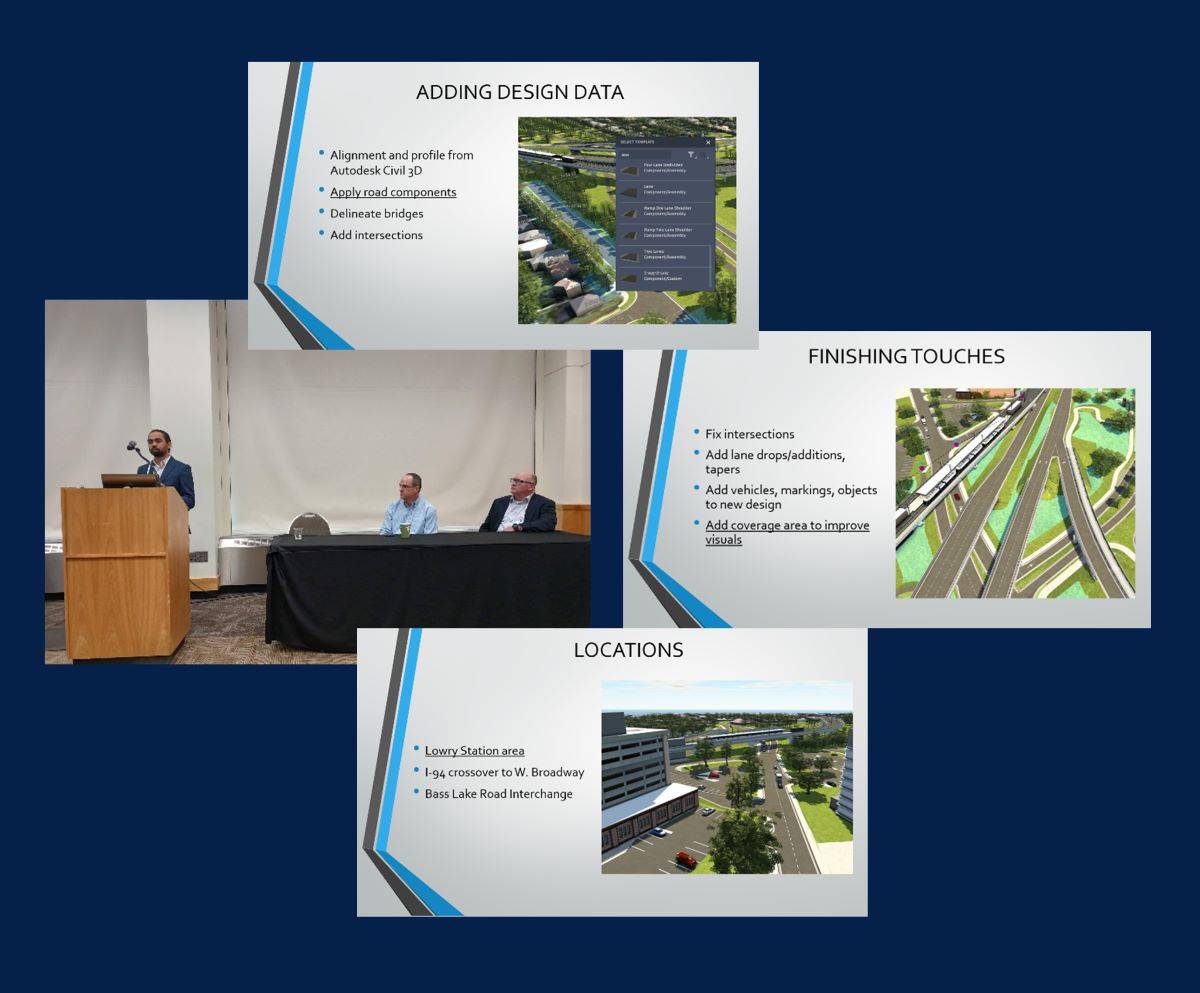Using 3D Models to Simplify Complex Alternatives Analysis
Senior Engineer, Pravin Dhakal approaches project work with a balanced blend of innovation and practicality. In May 2023, Pravin presented at the Minnesota Transportation Conference & Expo with his project colleagues, Rob Hume from Kimley-Horn and Nick Landwer from Metro Transit. Their presentation, “Using 3D Models to Simplify Complex Alternatives Analysis,” highlighted the creation of 3D model-based, photorealistic visualizations to support the route modification alternatives analysis for the Blue Line Extension LRT project.
Conveying complex engineering design features to project stakeholders is a critical, yet often time-consuming and challenging step in the planning and design of infrastructure projects. It requires balancing accurate technical detail to demonstrate feasibility and impact with a format that is understandable and digestible to those both with and without a technical background. Isthmus developed a rapid 3D visualization process using InfraWorks to create clear, photorealistic models of several design options in a fraction of the time it typically takes. This was key for a project that required multiple refined route options and a lengthy analysis of alternatives.

Pravin first provided some background and described an evolution in the ways technical concepts can be presented from CAD drawings, color-coded roll plots, and typical sections through 3D photos and videos, all the way to virtual and augmented reality. When choosing the best approach, the driving factor should be why and for whom you are creating the visualization materials and/or models. It is also important to evaluate and understand how realistic the 3D model should look. Typically, in stakeholder engagement, the model should convey that it is conceptual while still looking polished and professional.
Pravin walked through the steps of creating a base model, adding design data, applying finishing touches, rendering, and delivery. The base model includes surface and GIS data, materials like grass, concrete, water, and building faces, and objects like trees, signs, vehicles, and people. The design data is added from the alignment and profile created in Civil 3D followed by applying road components, delineating bridges, and adding intersections. Finishing touches including fixing intersections, adding lane drops/additions and tapers, adding objects to the new design, and adding coverage areas are completed before the model is rendered and captured as a still photo or a video.
Rob and Nick then shared the Blue Line case study detailing the advantages that the rapid 3D visualization process provided on the project. With stakeholders from different agencies with differing visions, there was the potential for debate over the design proposals. Some of the project areas had complex details to be considered and options were difficult to visualize with traditional engineering drawings. The detail of the 3D models allowed the decision-makers to effectively evaluate the options and provide direction. Those refinements were then incorporated more quickly and easily into updated models that were used in public meetings. This process was used and repeated in three key areas of the project corridor, at the Bass Lake Road intersection, near North Memorial Hospital, and in north Minneapolis near I-94.
Leveraging the rapid 3D visualization process, the project team was able to nimbly advance decision-making on the Blue Line Extension project. As the project moves forward, the 3D model will be updated to reflect the changing design details and continue to be an important tool to support decisions and communication.
For more information on the Blue Line Extension LRT project visit https://metrocouncil.org/Transportation/Projects/Light-Rail-Projects/METRO-Blue-Line-Extension.aspx and/or https://www.minneapolismn.gov/government/projects/blue-line-extension/.
For more information on the 3D Modeling & Visualization services at Isthmus, visit https://isthmusengineering.com/services/modeling-and-visualization.

"I was able to bring forward the rapid 3D visualization process that our team at Isthmus has developed through the years and show how we used it to compare alternatives and get public support for one of the major infrastructure projects in Minnesota. I hope this presentation and the Q/A session can help others use this process in their own projects."
-Pravin Dhakal
